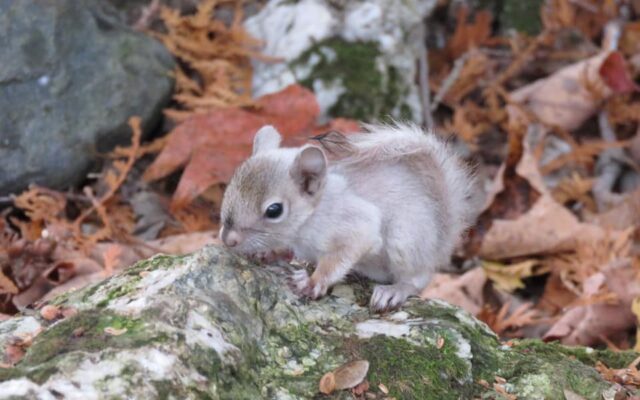
Strange animal sightings on the rise as the pandemic drives more Mainers into the woods
By Julia Bayly, Bangor Daily New Staff
To the casual observer, it looks like there are more albino or piebald critters wandering around the Maine woods or flying overhead these days. Hardly a month goes by without a social media post or news item about a white or spotted animal sticking out like a sore thumb next to its darker-colored companions.
It’s not that there are more animals with mutated pigmentation out there. A combination of improved technology and pandemic-related free time means there are more opportunities to observe them.
“There are so many cameras out in the woods that are picking up more and more of them,” said Mark Caron, wildlife biologist with the Maine Department of Inland Fisheries and Wildlife. “I really don’t think it’s a trend of more albino or piebald animals.”
A wild animal or bird has roughly a 1 in 10,000 chance of being born with the pigment mutation that creates albinism or a piebald color pattern.
In October alone, the Saco River Wildlife Center took in not one, but two albino porcupines; a white crow was spotted in Aroostook County; a moose with large white splotch on its back was recorded in Piscatiquis County; and a piebald squirrel was photographed in Corinth.
In each of these cases, the unique coloration was likely caused by a mutation in the genes that control pigmentation. It is often hereditary.
When it comes to the piebald coloration, a 2016 study out of the United Kingdom showed that the cells carrying the mutated pigment genes move faster and more randomly than other cells but do not multiply as well. This creates white, unpigmented patches which can look very different from one animal to another.
“The expression of the mutation just depends on the variation of that mutation the animal carries,” said Sarah Boyden, assistant regional biologist with the wildlife department. “I work in western Maine, and it’s pretty common to have piebald deer in our local population.”
Boyden said the ongoing pandemic is one of the reasons more of these unusually colored birds and animals are being reported.
“Everyone was at home and had more free time,” she said. “More people were out in the woods.”
A lot of those people carry mobile phones capable of taking good quality photographs and videos, Boyden said, allowing them to capture and share images of unique wildlife.
“Everyone also has game cams out there,” Boyden said. “So they don’t even need to be in the woods to see something interesting.”
Also gone are the days when you would set up a game cam in a remote location and then have to trudge back out to retrieve the memory card, return home and pop it in your computer to see what — if anything — has been recorded.
The latest technology are satellite and cellular cameras. These allow a person to set up a game camera and instantly access images or videos from the comfort of home.
“It’s an instant reward,” Boyden said.
Standing out in a crowd due to coloration is not necessarily a good thing for individual members of a species. Especially ones that count on their color to blend in with their surroundings.
“Think of an animal like the snowshoe hare that turns white in the winter to blend in,” Boyden said. “In years when there is no snow, they stand out like sore thumbs and that makes them easy to spot for predators.”